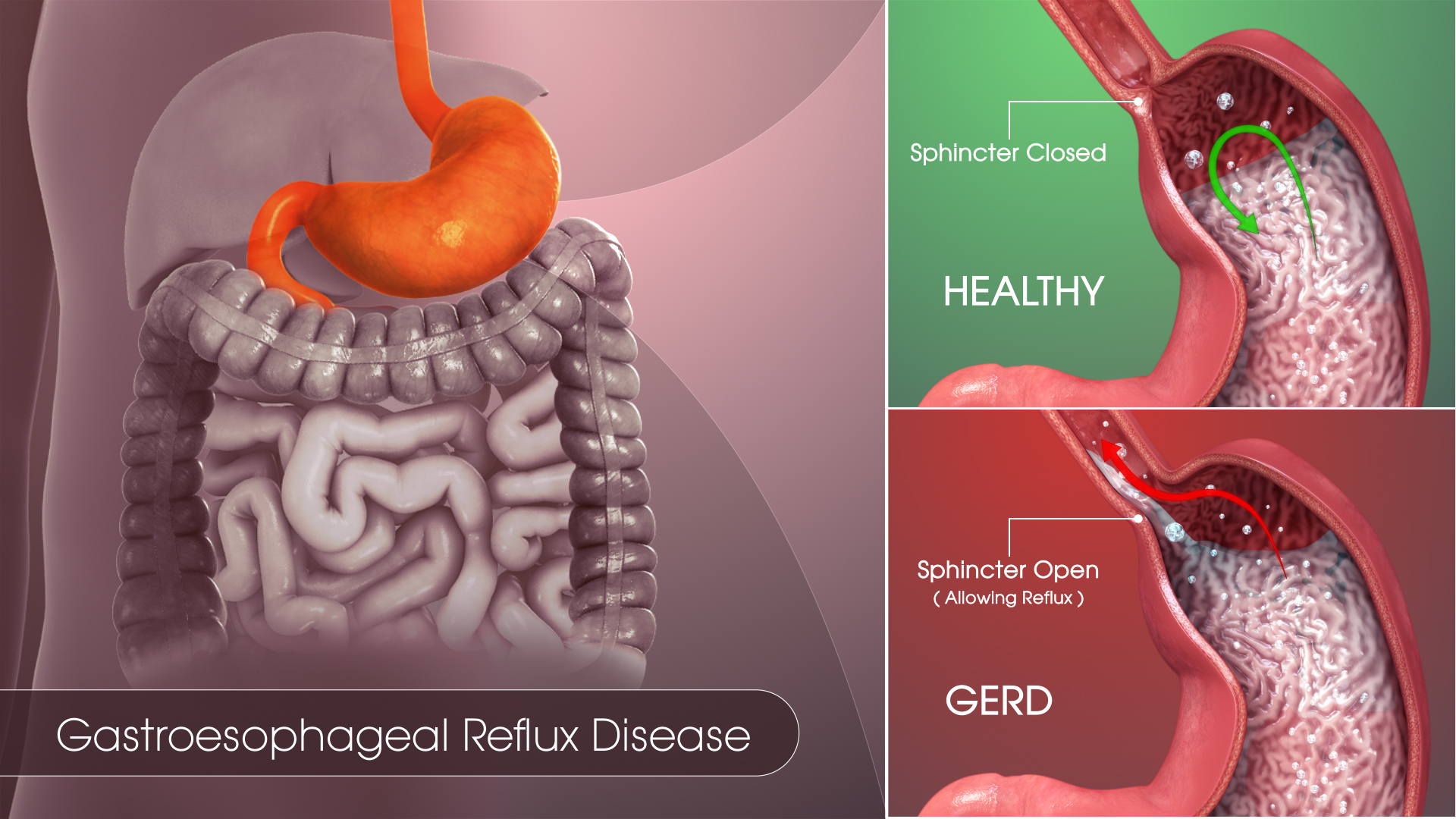The frequent flow back of stomach acid into the tube (esophagus) connecting the stomach and mouth of the human body, results in Gastroesophageal Reflux Disease (GERD). This acid reflux can irritate the esophagus’ lining.

Acid reflux from time to time is common with several people. GERD is mild acid reflux that happens two times a week at minimum, or moderate to severe acid reflux that happens at a minimum of once a week.
Most people are able to manage GERD’s discomfort with lifestyle changes and over-the-counter medications. But in some cases, the GERD condition may need some stronger medications or sometimes even a surgery to address the symptoms.
Symptoms
The usual signs and symptoms of GERD are listed below:
- Heartburn, which is a burning sensation in the chest usually after eating
- Pain in the chest
- Issues in swallowing
- Lump sensation in throat
- Regurgitation of sour liquid or food
In case there is nighttime acid reflux, below signs may also happen:
- Chronic cough
- New or worsening asthma
- Laryngitis
- Interrupted sleep
Causes
GERD happens due to frequent acid reflux.
When a person swallows, a circular band of muscle around the bottom of the esophagus (lower esophageal sphincter) relaxes to permit the liquid and flow into the stomach. Then the sphincter again shuts.
In the cases when the sphincter relaxes irregularly or weakens, the stomach acid could flow back up into the esophagus. This regular backwash of the acid irritates the esophagus’ lining, very commonly resulting in its inflammation.
Some of the Risk factors for GERD include:
- Obesity
- Pregnancy
- Delay in the emptying of stomach
- Hiatal hernia
- Connective tissue disorders
Some common factors that may increase the acid reflux are listed below:
- Eating big portions of meals or eating food late at night
- Smoking
- Eating certain kinds of foods such as fried foods
- Drinking of certain beverages such as coffee
- Certain medicines such as aspirin
Treatment
Most people are suggested with lifestyle and dietary changes. Treatment focuses on reducing the amount of reflux or decreasing the damage to the esophagus’ lining from refluxed materials.
Another usual suggestion is avoiding certain foods and beverages that could weaken the LES. These foods include fatty foods, peppermint, coffee, and alcoholic beverages. Foods and beverages that could often irritate a damaged lining of the esophagus, such as citrus fruits and juices, and pepper, must also be averted if they cause issues.
Disclaimer: The information in no way constitutes, or should be construed as medical advice. Nor is the above article an endorsement of any research findings discussed in the article an endorsement for any of the source publications.
Sources-
- https://www.mayoclinic.org/diseases-conditions/gerd/symptoms-causes/syc-20361940
- https://www.webmd.com/heartburn-gerd/guide/reflux-disease-gerd-1#2
The longest part of the digestive system is small intestine. It is approximately 20 feet long and folds multiple times to fit into the abdomen. The small intestine forms the gastrointestinal tract along with the large intestine, the esophagus, and the stomach. It connects the stomach to the large intestine.
Read More..










